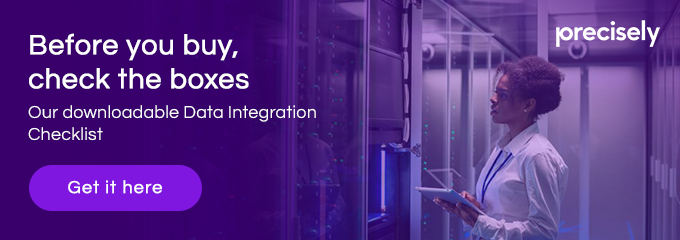
6 Real-World Examples of Data Integration in Healthcare, Finance, Retail and More

Integrating data is the first step to unleashing its full potential. When companies have all their information in one place, they’re able to find the most important and accurate insights within it. Those insights are what gives companies an advantage over the competition. It’s hard to overstate how transformative data integration is. It’s also hard to imagine exactly how it helps unless you’ve seen the benefits for yourself. Here are some real-world data integration examples.
Data integration examples across six different industries
In retail
Stores that operate online and in bricks-and-mortar deal with a lot of data. Tracking performance depends on having all that data in one location regardless of what store or employee entered it. Data integration empowers stores to manage inventory, labor hours, sales, and other crucial metrics across all their channels and outlets.
In healthcare
Treating a patient requires as much information as possible. When that data is spread across systems, it only compromises care. Integrating as much patient data as possible into one comprehensive record promises to transform the healthcare industry. Controlling costs, improving outcomes, and elevating health and wellness are all possible once health data becomes more comprehensive.
In finance
Fraud is a huge and growing problem in finance. Banks and other institutions can identify, eliminate, and prevent instances of fraud, just as long as all their data is integrated. Once it is, AI can mine the data for anomalies and outliers, often catching the fraud before it affects the customer. If the data is still siloed or fragmented, however, that kind of early intervention is not possible.
In marketing
Marketing is a detail-oriented effort. If every aspect is not finely-tuned, messages will not reach the right audience at the intended time. Information on thousands or potentially millions of consumers can easily become unmanageable, leading to wasted marketing budgets and disappointing campaigns. Integrating the data is the only way to keep it organized, accurate, and up-to-date.
In telecommunications
Quality customer service is vital in telecommunications but hard to sustain because it’s such a massive effort. Integrating data from as many sources as possible provides a 360-degree view of company-client relations. Issues that lead to more customer service requests or poor customer service encounters can be identified and corrected. Eventually, with enough data, companies can treat every customer as an individual.
In rating services
Rating companies like Nielsen and Comscore stake their reputation on having the most accurate insights available. Collecting more data from more sources ensures that ratings are as comprehensive and trustworthy as possible. Deeper data also creates opportunities to rate new things in new ways. Constantly collecting more information is what will keep existing rating systems relevant.
In truth, there are not many issues that data integration can’t solve, which just makes sense. It’s a way of replacing confusion with clarity, especially in relation to the most complex issues you face.
With Precisely data integration software, any business can create a modern data architecture that includes any data source regardless of the data’s type, format, origin, or location in a manner that’s fast, easy, cost-effective, secure, and future-proof.
For more information, get our checklist of the 10 key features when hiring a data integration vendor. Read The Data Integration Top 10.



